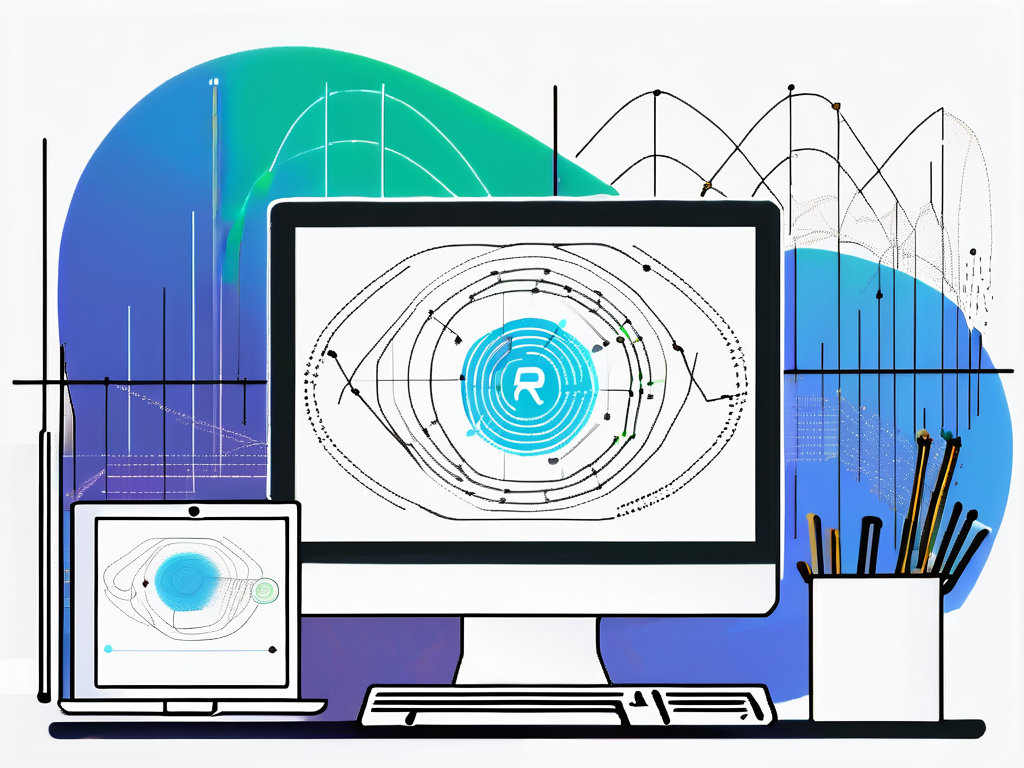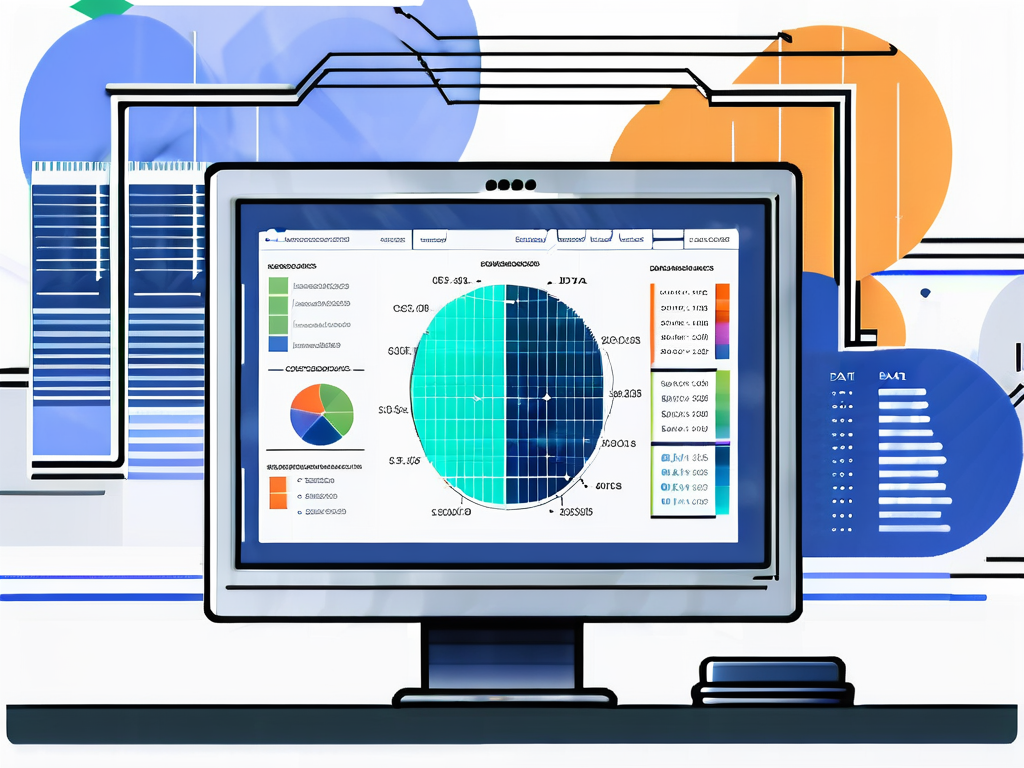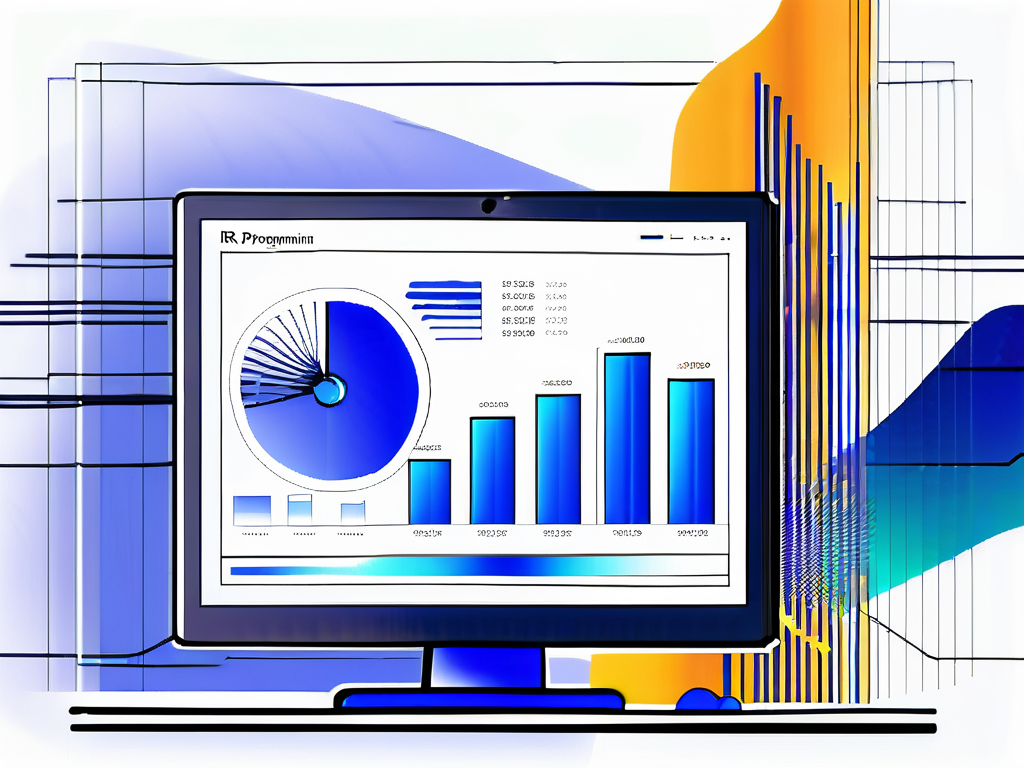R for Data Science: A Comprehensive Guide is a comprehensive overview of R, a popular programming language for data science. Whether you are new to R or have some experience with it, this guide will provide you with the knowledge and tools you need to effectively use R for various data science tasks. From understanding the basics of R to advanced programming techniques, data manipulation, analysis, visualization, and even machine learning, this guide covers it all.
Understanding the Basics of R
What is R?
R is a programming language and software environment for statistical computing and graphics. Developed by Ross Ihaka and Robert Gentleman in the early 1990s at the University of Auckland, New Zealand, R was created as an open-source project to provide statisticians and data analysts with a powerful tool for data analysis. Over the years, R has evolved into a robust platform with a dedicated user base that continues to contribute to its growth and development.

One of the key features of R is its flexibility and extensibility. Users can easily write their functions and packages, allowing for endless customization and specialization based on specific needs. This has led to the creation of a vast repository of user-contributed packages that cover a wide range of statistical techniques and data visualization methods.
Why Use R for Data Science?
There are several reasons why R is widely used in the field of data science. Firstly, R’s syntax is designed to be intuitive and user-friendly, making it accessible to beginners while still offering advanced capabilities for seasoned professionals. The language’s emphasis on vectorization and functional programming enables users to write concise and efficient code for complex data manipulation tasks.
Furthermore, R’s graphical capabilities are unparalleled, with the ability to create publication-quality plots and visualizations for exploratory data analysis and presentation purposes. The integration of tools like ggplot2 and plotly has further enhanced R’s data visualization capabilities, allowing users to create interactive and dynamic graphics with ease.
Installing and Setting Up R
Before you can start using R, you need to install it on your computer. R can be downloaded for free from the official website (link: https://www.r-project.org/). The installation process is straightforward and is supported on multiple operating systems, including Windows, macOS, and Linux. Once R is installed, users can leverage its command-line interface for direct interaction or opt for integrated development environments (IDEs) such as RStudio.
RStudio is a popular choice among R users due to its comprehensive features, including code highlighting, debugging tools, and integrated help documentation. The IDE streamlines the workflow for data analysis and visualization, providing a seamless experience for both beginners and experienced R programmers.
Getting Started with R
Basic Syntax in R
Once you have R set up on your computer, it’s time to dive into the basics of R programming. R uses a straightforward syntax that is easy to learn and understand. In R, statements are typically written one line at a time, and each statement ends with a semicolon (;). It also supports various data types, including numeric, character, logical, and more.
When working with R, it’s important to understand the concept of functions. Functions are blocks of code that perform a specific task and can be called upon to execute that task whenever needed. R comes with a wide range of built-in functions, and users can also create their own functions to suit their specific needs. Mastering functions is key to writing efficient and reusable code in R.
Data Types and Variables in R
In R, data is stored in objects called variables. A variable can hold different types of data, such as numbers, text, or logical values. R provides several data types, including numeric, character, factor, and more. Understanding and properly handling data types is crucial for performing accurate data analysis in R.
Another important concept in R is vectors. Vectors are one-dimensional arrays that can hold elements of the same data type. They are fundamental to R programming and are used extensively in tasks such as data manipulation, statistical analysis, and plotting. Knowing how to create, subset, and manipulate vectors is essential for working effectively with data in R.
Operators in R
R supports a wide range of operators that allow you to perform mathematical calculations, logical operations, and more. Some commonly used operators in R include arithmetic operators (+, -, *, /), comparison operators (==, !=, >, <), and logical operators (&&, ||, !).
Data Manipulation in R
Understanding Data Frames in R
Data frames are one of the most commonly used data structures in R for storing and manipulating data. A data frame is a table-like structure where rows represent observations and columns represent variables. This tabular format makes it easy to work with structured data, enabling users to perform various operations such as filtering, sorting, and summarizing. Understanding how to work with data frames is essential for data manipulation and analysis in R.

When working with data frames, it is important to be familiar with functions like subset(), merge(), and transform() that allow for efficient data manipulation. These functions enable users to extract subsets of data, combine multiple data frames based on common columns, and create new variables based on existing ones.
Importing and Exporting Data in R
R provides various functions and packages for importing and exporting data from different file formats, such as CSV, Excel, or databases. Being able to efficiently import and export data is crucial for working with real-world datasets in R. Packages like readr and readxl offer fast and user-friendly ways to read data from files, while packages like DBI and RODBC provide interfaces for connecting to databases.
Cleaning and Preprocessing Data with R
Real-world data is often messy and requires cleaning and preprocessing before it can be used for analysis. R provides several packages and techniques for data cleaning, such as dealing with missing values, handling outliers, and standardizing or transforming variables. A thorough understanding of data cleaning and preprocessing is essential for ensuring the accuracy and reliability of your analysis. Techniques like imputation, outlier detection, and scaling are commonly used to prepare data for statistical modeling and machine learning.
Moreover, data preprocessing steps like feature engineering, dimensionality reduction, and data transformation play a crucial role in improving the performance of predictive models. By carefully preparing and preprocessing data, analysts can uncover meaningful insights and make informed decisions based on reliable data analysis results.
Data Analysis with R
Descriptive Statistics in R
R provides a wide range of functions for calculating descriptive statistics, such as measures of central tendency (mean, median), measures of dispersion (standard deviation, range), and more. Descriptive statistics allow you to summarize and describe the characteristics of your data.
When conducting data analysis in R, it’s essential to understand the importance of descriptive statistics. These statistical measures provide valuable insights into the distribution and spread of your data, helping you identify patterns, outliers, and potential relationships within your dataset. By utilizing functions like summary(), mean(), and sd() in R, you can gain a comprehensive understanding of the central tendencies and variability present in your data, enabling you to make informed decisions and draw meaningful conclusions.
Inferential Statistics in R
Inferential statistics involves making inferences and drawing conclusions about a population based on a sample. R provides various statistical tests and techniques for hypothesis testing, confidence intervals, and more. Understanding inferential statistics is crucial for making data-driven decisions and drawing meaningful insights from your data.
One of the key aspects of inferential statistics in R is hypothesis testing, where you can assess the significance of relationships or differences within your data. By utilizing functions like t.test(), chisq.test(), and cor.test() in R, you can evaluate hypotheses, determine the statistical significance of your findings, and make informed decisions based on the results. Additionally, R offers powerful visualization tools, such as ggplot2, to help you visualize the outcomes of inferential analyses, making it easier to communicate your findings effectively to stakeholders and colleagues.
Regression Analysis in R
Regression analysis is a statistical technique used for modeling the relationship between a dependent variable and one or more independent variables. R provides extensive capabilities for performing regression analysis, including linear regression, logistic regression, and more. Regression analysis is widely used in various fields, such as finance, economics, and social sciences.
When conducting regression analysis in R, it’s important to consider the assumptions and limitations of different regression models to ensure the validity and reliability of your results. By utilizing functions like lm(), glm(), and predict() in R, you can build regression models, assess the strength of relationships between variables, and make predictions based on your data. Whether you are exploring causal relationships, forecasting outcomes, or identifying trends, regression analysis in R empowers you to extract valuable insights and make data-driven decisions in your research or business endeavors.
Data Visualization in R
Plotting Basics in R
R provides powerful tools for creating visually appealing plots and charts. You can create basic plots, such as scatter plots, bar charts, and histograms, using functions like plot(), barplot(), and hist(). Knowing how to plot data effectively is crucial for communicating your findings and insights visually.

When creating scatter plots in R, you have the flexibility to customize the colors, shapes, and sizes of data points to highlight patterns or relationships within the data. Bar charts can be enhanced with different bar widths and styles to emphasize specific data points. Histograms in R can be adjusted with various bin widths and colors to provide a clearer representation of the data distribution.
Advanced Graphical Capabilities in R
Beyond basic plots, R offers advanced graphical capabilities for creating more complex and informative visualizations. You can create interactive plots, 3D plots, and specialized plots like heatmaps, treemaps, and network graphs. Having the knowledge and skills to create advanced visualizations will take your data analysis to the next level.
With R’s 3D plotting capabilities, you can visualize data in a three-dimensional space, adding depth and perspective to your plots. Heatmaps are useful for displaying data in a matrix format, with colors representing different values to easily identify patterns. Treemaps are ideal for visualizing hierarchical data structures, where the size and color of rectangles represent different attributes. Network graphs in R help visualize relationships between entities, making complex networks easier to understand.
Interactive Visualizations with R
R provides packages such as Shiny that allow you to create interactive web-based visualizations. Interactive visualizations engage your audience and enable them to explore and interact with the data. Incorporating interactivity into your visualizations can enhance the storytelling aspect of your data analysis.
Shiny in R enables you to build dynamic dashboards and applications that respond to user inputs, creating a personalized and engaging data exploration experience. Interactive plots in Shiny can be linked to other visualizations or data summaries, providing a holistic view of the data. With interactive visualizations, users can zoom in on specific data points, filter information based on criteria, and uncover insights that static plots may not reveal.
Advanced R Programming
Functions and Packages in R
R allows you to define custom functions to encapsulate reusable blocks of code. Understanding how to write functions and effectively use packages is essential for writing efficient and modular code in R. R has a vast collection of packages available through its Comprehensive R Archive Network (CRAN) and other repositories, providing additional functionalities that can greatly enhance your data analysis workflow.
When creating custom functions in R, it’s important to consider factors such as input validation, error handling, and documentation to ensure the reliability and usability of your functions. By following best practices in function design, you can create robust and versatile functions that can be easily shared and reused across projects.
Debugging and Error Handling in R
No code is perfect, and errors can occur during programming. R provides tools and techniques for debugging and handling errors, such as using debug() to step through code line by line and tryCatch() for handling errors gracefully. Understanding how to debug and handle errors will save you time and frustration during the development process.
In addition to debugging tools, R also offers features like assertions and unit testing frameworks that can help you catch errors early in the development cycle and ensure the correctness of your code. By incorporating these practices into your workflow, you can improve the reliability and maintainability of your R programs.
Performance Optimization in R
As datasets and analysis tasks grow in complexity, optimizing the performance of your R code becomes crucial. R provides various techniques for improving the performance of your code, such as vectorization, parallel computing, and avoiding unnecessary computations. Having knowledge of performance optimization techniques will help you write faster and more efficient R programs.
Furthermore, understanding the underlying principles of how R handles memory management and data structures can also contribute to optimizing the performance of your code. By leveraging efficient data structures and algorithms, you can significantly reduce the computational overhead of your R scripts and streamline your data analysis pipelines.
R in Machine Learning
Supervised Learning in R
R provides a wide range of algorithms and packages for supervised learning, where the model learns from labeled data to make predictions or classifications. Common supervised learning algorithms in R include linear regression, decision trees, random forests, and support vector machines. Understanding how to implement and evaluate supervised learning models in R is essential for predictive modeling tasks.
When working with supervised learning in R, it’s crucial to preprocess the data properly before training the models. This preprocessing step may involve handling missing values, scaling features, encoding categorical variables, and splitting the data into training and testing sets. Additionally, techniques like cross-validation and hyperparameter tuning can be employed to optimize the performance of the models. By fine-tuning these aspects of the supervised learning process in R, data scientists can improve the accuracy and generalization of their predictive models.
Unsupervised Learning in R
Unsupervised learning involves learning patterns and structures in unlabeled data. R offers various algorithms and techniques for unsupervised learning, such as clustering, dimensionality reduction, and association rule mining. Applying unsupervised learning algorithms can help uncover hidden insights and patterns in your data.
Exploratory data analysis plays a crucial role in unsupervised learning tasks in R. By visualizing the data distribution, identifying outliers, and understanding the relationships between variables, data scientists can gain valuable insights that guide the selection of appropriate unsupervised learning algorithms. Furthermore, post-clustering analysis and visualization techniques can help interpret the results of clustering algorithms and extract meaningful information from the grouped data.
Neural Networks and Deep Learning in R
Deep learning, a subset of machine learning, has gained significant popularity in recent years due to its ability to solve complex problems using artificial neural networks. R provides packages for implementing and training deep learning models, such as TensorFlow and Keras. Understanding how to use neural networks and deep learning in R opens up new possibilities for solving challenging data analysis tasks.
When delving into neural networks and deep learning in R, data scientists can explore advanced topics such as convolutional neural networks (CNNs) for image recognition, recurrent neural networks (RNNs) for sequential data analysis, and generative adversarial networks (GANs) for generating synthetic data. By leveraging these cutting-edge techniques in R, researchers and practitioners can tackle a wide range of real-world problems, from natural language processing to computer vision, pushing the boundaries of what is possible in the field of machine learning.
Conclusion
Future of R in Data Science
R has established itself as a popular and powerful tool for data science and will continue to be at the forefront of statistical computing and data analysis. With its extensive ecosystem of packages, dedicated community support, and continuous development, R is poised to evolve further and adapt to future data science challenges.
Resources for Further Learning
Learning R for data science is an ongoing journey, and there are numerous resources available to deepen your understanding and skills. The official R website (link: https://www.r-project.org/) provides documentation, tutorials, and links to additional resources. Online platforms such as Coursera, DataCamp, and Kaggle offer specialized courses and projects where you can apply your knowledge and gain hands-on experience with R.
Start your journey with R for data science today, and unlock the full potential of this versatile programming language!

Leave a Reply